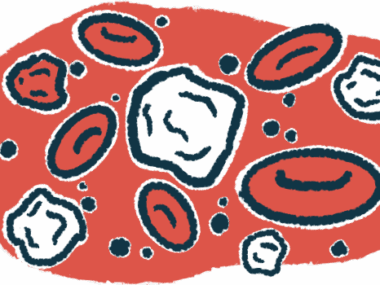Tear, salivary gland inflammation can occur in people with AAV
Problems with eye swelling, discomfort most often seen in type GPA
Written by |

Although uncommon, inflammation of the salivary and tear glands can occur in people with ANCA-associated vasculitis (AAV) — most often among those with granulomatosis with polyangiitis (GPA), one of the most common AAV types — according to a new study from researchers in France.
The parotid gland, the largest salivary gland located in front of and below the ears, was the most commonly affected salivary gland, the data showed. Also, inflammation of the tear glands was associated with eye swelling or discomfort, the team noted.
“Glandular involvement of the head and neck is a rare but identifiable manifestation of active AAV,” the researchers wrote, noting that knowing about its occurrence, while uncommon, can “[refine] clinical assessment for optimal management of patients with AAV.”
The study, “Glandular Manifestations of the Head and Neck in ANCA‑Associated Vasculitides: Data from a National Cohort and Systematic Review,” was published in the journal Clinical Reviews in Allergy & Immunology.
In AAV, the immune system mistakenly attacks small blood vessels, causing inflammation and damage. Most cases are caused by self-reactive antibodies called ANCAs, which typically target one of two proteins — myeloperoxidase, called MPO, or proteinase 3, known as PR3.
GPA, most common AAV type, often affects the ear, nose and throat
AAV is classified into three main types: GPA, MPA, fully, microscopic polyangiitis, and eosinophilic granulomatosis with polyangiitis, or EGPA.
MPA mainly involves the kidneys and is often linked to anti-MPO ANCAs. EGPA, the rarest AAV type, most often affects the airways and is less commonly associated with ANCAs. GPA, usually associated with anti-PR3 ANCAs, typically affects the lungs, kidneys, and upper airways, most commonly the ear, nose, and throat.
Less commonly, AAV can affect the salivary and tear glands of the head and neck. Because these issues can mimic those seen in other conditions — such as Sjögren’s disease or IgG4-related disease (IgG4-RD) — they are often overlooked or misdiagnosed.
Now, the research team noted that a better understanding of this rare presentation could help doctors recognize AAV earlier and begin treatment sooner.
To learn more, the scientists first analyzed data from a national survey sponsored by the French Vasculitis Study Group (FVSG). The survey asked participating centers to report, from May 2021 to May 2024, all cases of people, aged 16 or older, with an AAV diagnosis who showed salivary or tear gland involvement.
For each patient, clinicians provided details on organ involvement, ANCA test results, the affected glands, imaging results, biopsy findings, treatment, and outcomes. Cases possibly linked to Sjögren’s or IgG4-RD were excluded.
The FVSG study involved 20 adults — 12 women and eight men — with a median age of 52. Most (85%) had GPA, and nearly all were newly diagnosed. ANCAs were detected in 14 individuals (70%), most often targeting PR3 (71.4%).
Salivary gland involvement reported for 65% of patients in study
All but two participants (90%) showed head and neck symptoms at AAV diagnosis. Other common AAV symptoms were respiratory issues, affecting 65%, and eye-related problems, experienced by 55%. In all but four patients, glandular symptoms — such as swelling of the salivary or tear glands — appeared either before or at the same time as body-wide symptoms.
Salivary gland involvement was reported in 13 patients (65%), with the parotid gland as the most commonly affected one. This was the case for 45% of the participants. The tear glands were affected in half of the patients. Tear gland inflammation, or dacryoadenitis, was bilateral in most cases, meaning it affected both eyes, and “systematically associated with GPA,” the team wrote.
All patients received glucocorticoids, which are anti-inflammatory medications commonly used in AAV treatment, and most were also given an immunosuppressive therapy. After a median follow-up of 42 months, or about 3.5 years, nearly all (94%) achieved disease remission, though some experienced relapses marked by glandular symptoms.
The team then systematically reviewed studies published through June 5, 2024, reporting on cases of people with AAV-related glandular involvement. Results from 67 cases, spanning more than six decades, revealed a similar pattern to that observed in the FVSG study.
Early recognition of this uncommon presentation may aid in the diagnostic workup and clinical evaluation for early treatment and optimal management of patients with AAV.
Most of the patients from the reviewed studies were in their early 50s, and a slightly higher proportion were women. GPA was the most common AAV type, seen for 81%. ANCAs were detected in 46 patients (69%), and in most cases (84.8%), these targeted the PR3 protein.
Salivary gland involvement was present in most cases, and the parotid gland was again the most frequently affected. Tear gland involvement was less common, affecting 22%, and manifested exclusively in the form of dacryoadenitis.
Glandular inflammation often occurred alongside involvement of the lungs, ear, nose, and throat, or kidneys. Treatment with glucocorticoids and immunosuppressants led to disease remission in 85% of cases.
When the FVSG data and published reports were combined, GPA emerged as the dominant form of AAV linked to glandular involvement, followed by EGPA.
Salivary gland involvement was significantly linked to higher chance of ENT symptoms, by fourfold, and anti-PR3 ANCAs, by threefold. Dacryoadenitis was significantly associated with a nearly fourfold higher likelihood of having other eye manifestations.
The researchers concluded that glandular involvement of the head and neck, while rare, was “recognisable manifestation of AAV.” The team noted that “early recognition of this uncommon presentation may aid in the diagnostic workup and clinical evaluation for early treatment and optimal management of patients with AAV.”






